After the hustle and bustle of Lima, we left for our 5th country – Chile. From the arid desert in the north to the frigid subarctic fjords in the south, the country’s extensive coastline provided ample opportunity for exploration and adventure. And explore we did: we travelled far beyond our ports of call to see picturesque towns, scenic lakes and best of all, came within hailing (or trumpeting) distance of the Kings!

Our next port in Chile was Arica, an oasis at the edge of Chile’s Atacama Desert, purportedly the driest place on earth. The geoglyphs date back hundreds of years.
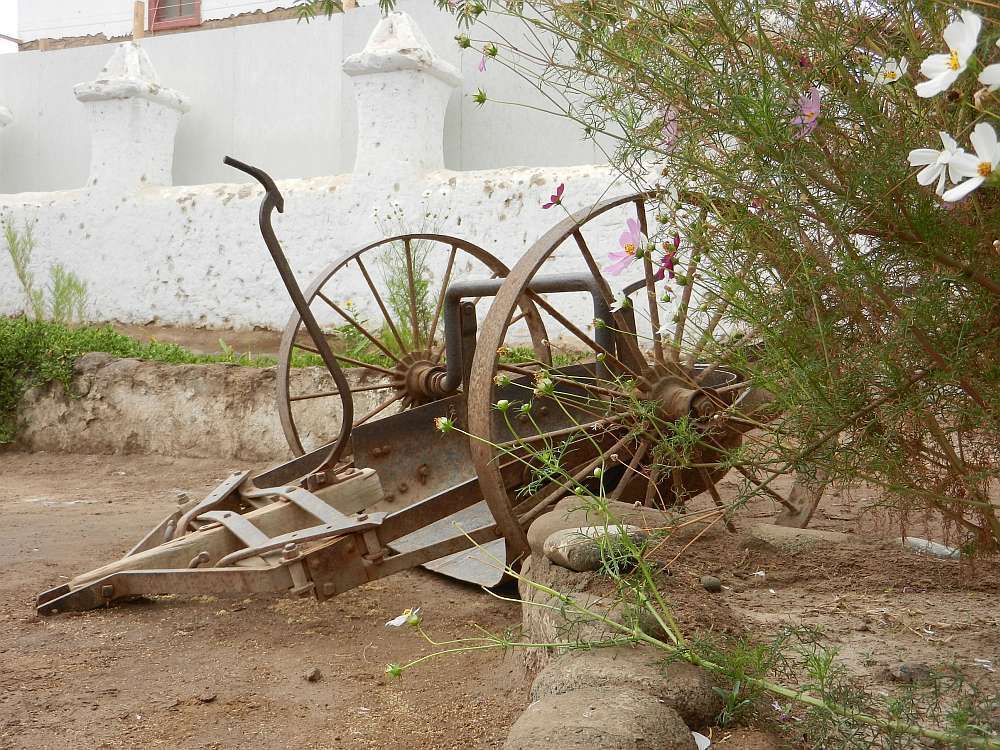
Iglesia de San Jerónimo of Poconchile is the oldest colonial church in northern Chile and a national monument. It was fenced off for repairs the day of our visit so we just puttered around the building perimeter.

The extremely dry conditions make fresh flowers impractical so the graves are exuberantly decorated with plastic flowers and an occasional sun cover, giving the whole cemetery an unexpectedly festive look.
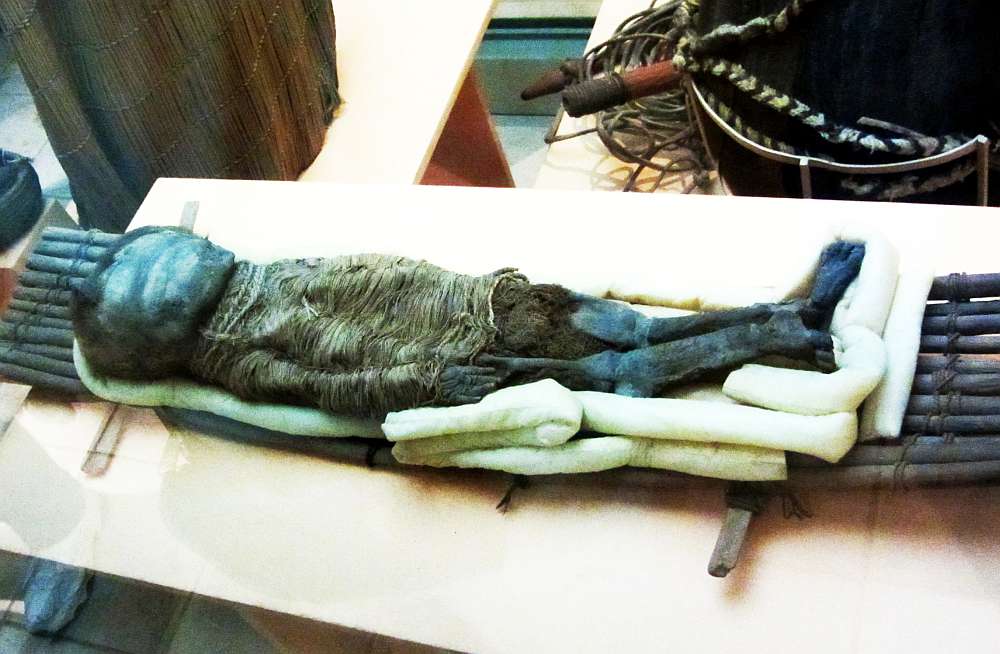
Another of the tour’s highlight was the San Miguel de Azapa Archaeological Museum. National Geographic had written extensively on the Chinchorro mummies, the oldest of which dates back to 7020 BC. The small but well curated museum covers the pre-Columbian cultures in the Arica area.
Though there’s purportely a bigger version of the Poconchile village cemetery by the museum, we somehow never saw it.
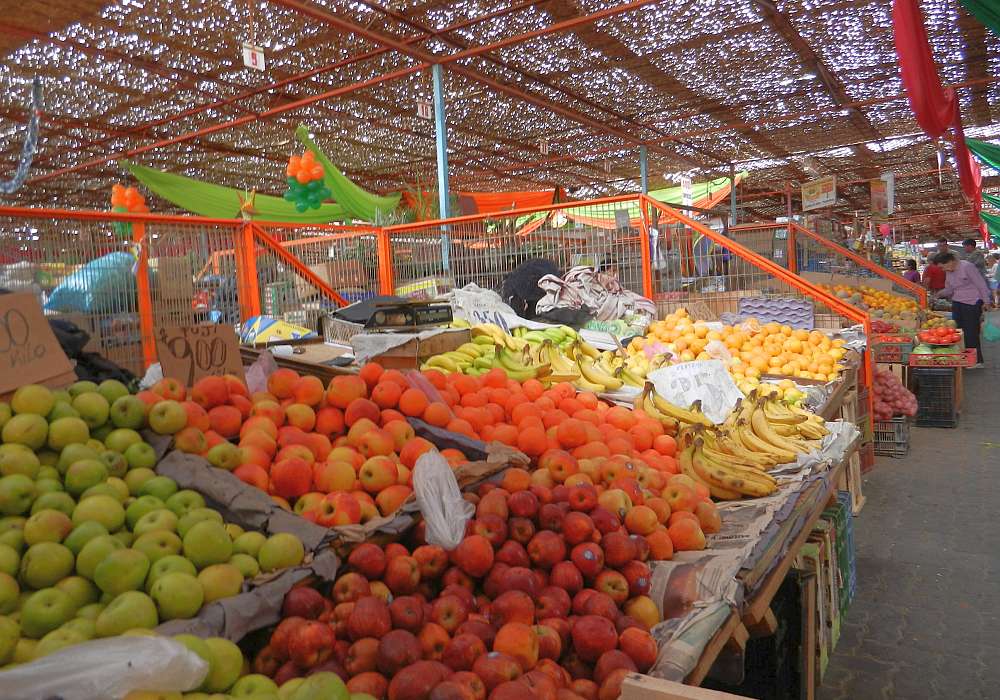
Since it never rains in Arica, the market’s roof is made of woven grass which creates an interesting silhouette against the sky. The place is packed with local produce as far as the eye can see.
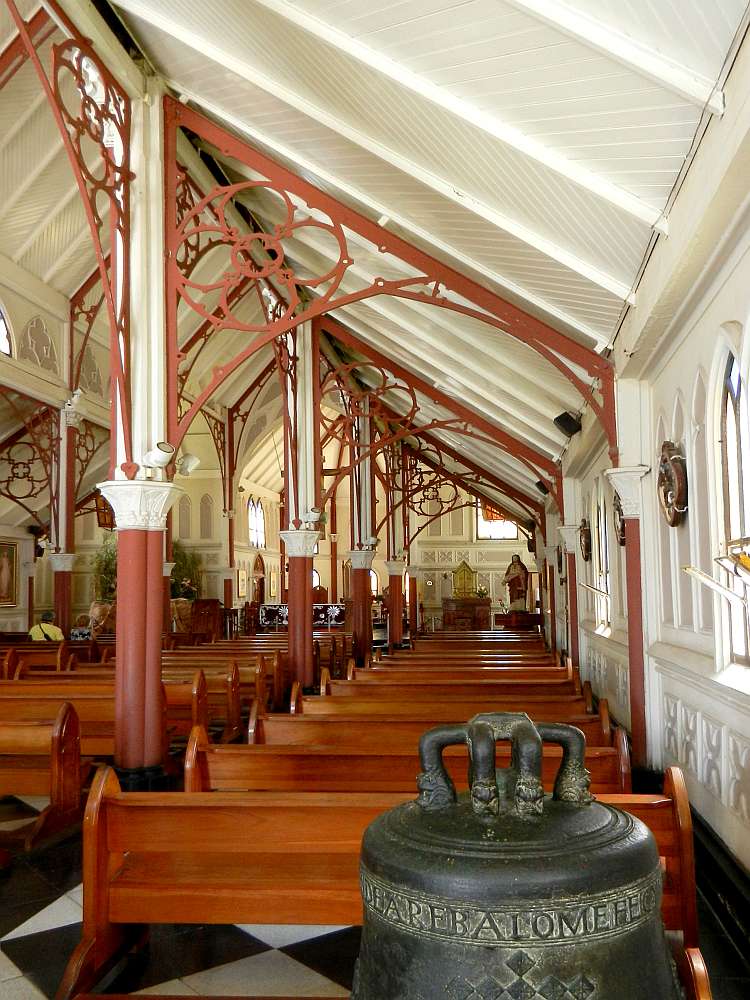
The cathedral was designed by Gustave Eiffel of Eiffel Tower fame. Fabricated completely of iron except for the 2 wooden doors, the structure was shipped from France to Arica and inaugurated in 1876.

Next stop: Coquimbo. This 131 x 272 feet concrete monument stands 646 feet above sea level and is supposed to be the tallest in South America.
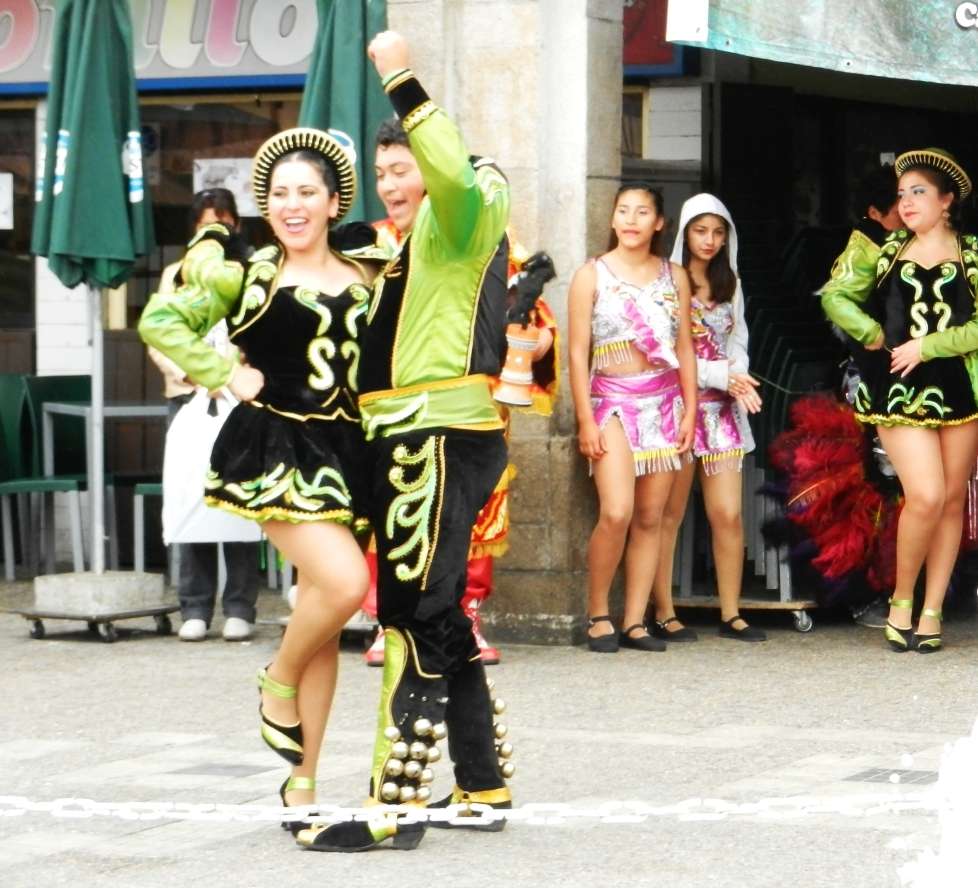
After some adventure looking for the local bus stop, our group eventually headed for La Serena, Coquimbo’s more scenic sister town. We stopped by La Recova to check out the local goods and got some unexpected entertainment.
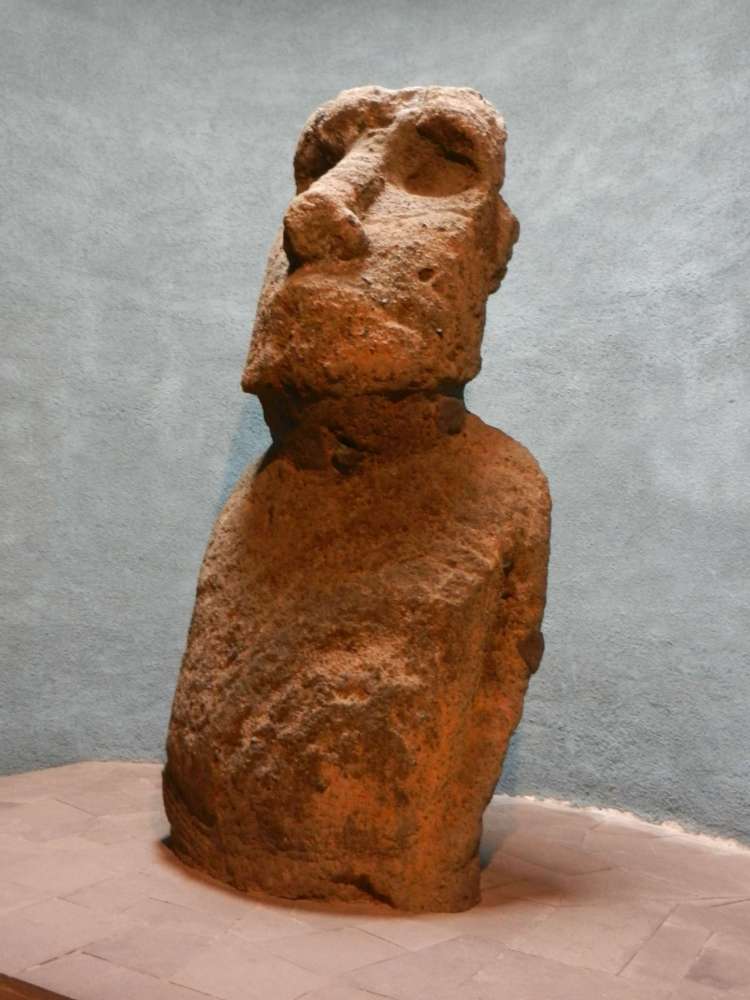
Apparently La Serena Archeological Museum is one of the places you can come face to face with a Moai! Turns out Easter Island is Chilean territory about 2000 miles due west of La Serena, which explains why the museum has a section devoted to the Rapanui culture and its artifacts.
The modest museum was swamped with the ship’s tourists but I managed to snap pix of the Moai. And no, I DON’T want any selfies with it…
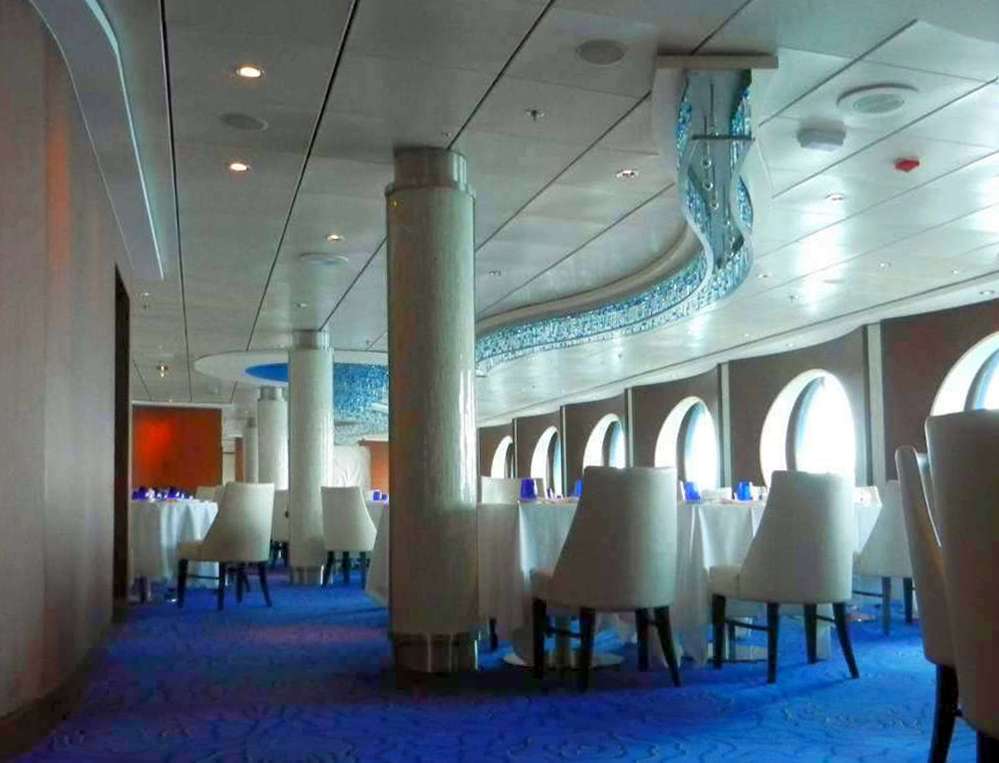
Only guests who ponied up for the AquaClass staterooms on Celebrity can dine at Blu. Since I only had a ‘marsupial class’ stateroom I didn’t qualify, but at least I could take pix.

Here’s one of the main reasons for me to go on this cruise: to see the Kings Penguins! Having read about vague sightings of a small colony in Tierra del Fuego, I found a company that offers a grueling 14-hour road trip from Punta Arenas to the cold, inhospitable spit of land called Bahia Inutil where the penguins hang out. After disembarking at Valpraiso we lost no time and flew straight to Punta Arenas. Though (in)famously known for gusty winds of 80 mph, it’s the amazing abundance of excellent, cheap Chilean wine and fresh king crab that stuck to our memories.
On arrival at Bahia Inutil, we spotted the colony on the other side of a small inlet. We were told to lie on our stomachs on our side of the bank to avoid disturbing the birds. The wind was so blustery and unrelenting that I could barely hold my camera still when propped on my elbows. Luckily I was warmly dressed and continued to snap away at the penguins undeterred. So I was mightily surprised to look up and find that most people had huddled around a sheltered area, waiting to leave – barely over 30 minutes after we arrived!
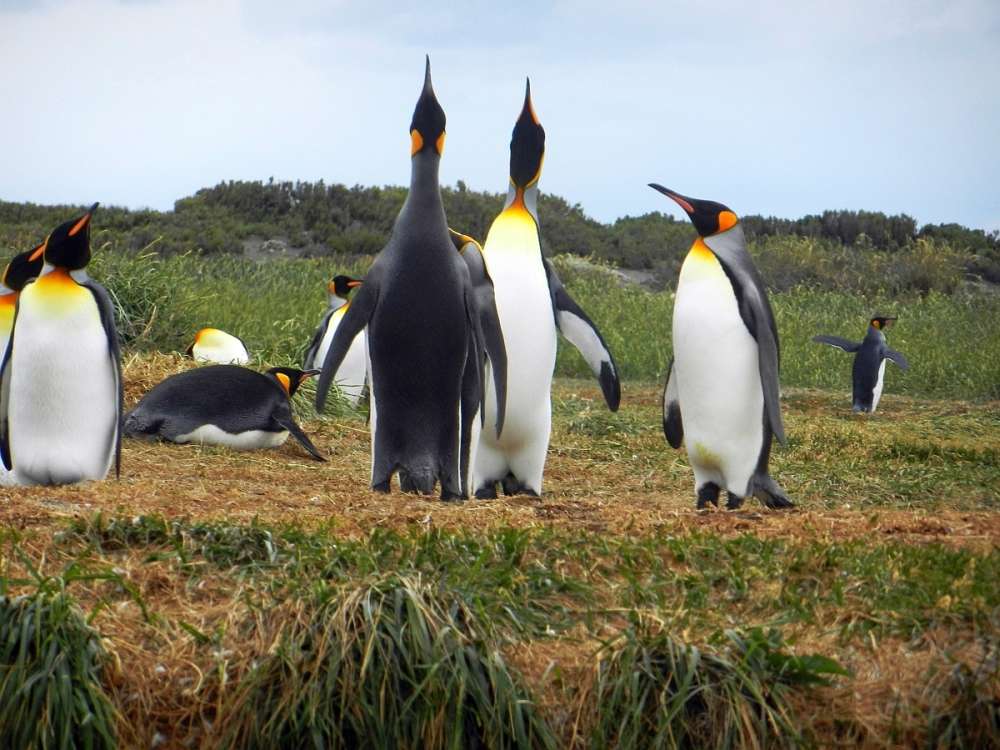
There was a lot of displaying going on among the penguins. A male King Penguin would call and stretch its neck to the max to attract a female but once mated, a pair of King Penguins would face each other and trumpet, stretch, bob, shake and bow their necks in unison as part of the courtship rituals.
My concern about outings on Christmas eve bore out as our driver raced through the trip, shortening all stops so he won’t be late for holiday festivities. In fact he made such good time that our tour got done in a record 10 hours! Since hardly any restaurant stayed open on X’mas eve, I had the foresight to stash a bottle of wine and the excellent king crab from our previous dinner to welcome Yuletide in style.
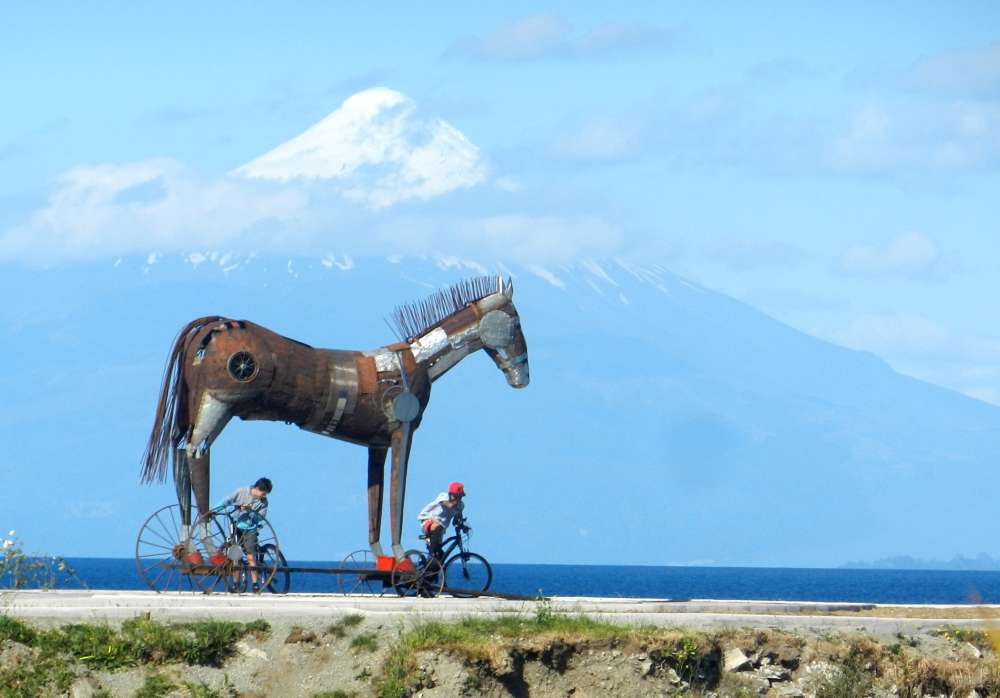
We headed for the much more picturesque and temperate Puerto Varas on Christmas Day. The town, known for its German architecture, is on the shore of Lago Llanquihue the second largest lake in Chile. The sculpture is by Oscar Paredes Venegas and stands 8 ft at the shoulder.

All too soon it was time to leave for Argentina via the most scenic but epic transit of 3 bus and 3 boat rides, which would take us through the Lake Region shared by both countries. The bus trip started at 8 am with a photo stop at Vicente Pérez Rosales National Park. Then we crossed Todos los Santos Lake by boat. After a lunch break at an ‘eco village’, our next bus made a border stop so we could clear Chilean Customs and continue the journey into Argentina. A ferry crossing on Felix Frías lake and bus ride took us to Nahuel Huapi Lake for our final boat excursion.
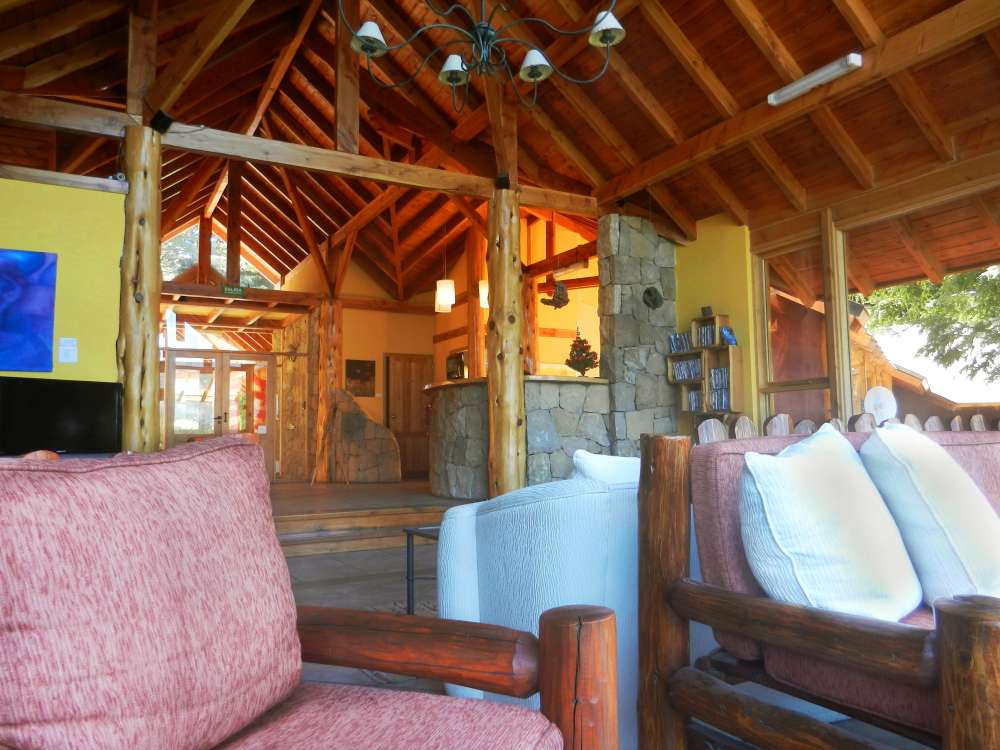
The last bus would take all passengers into the resort town of Bariloche. Since we were staying by Nahuel Huapi, I arranged for our lodge to pick us up. We finally checked in about 7 pm – Home Sweet Home for the next 3 days!


